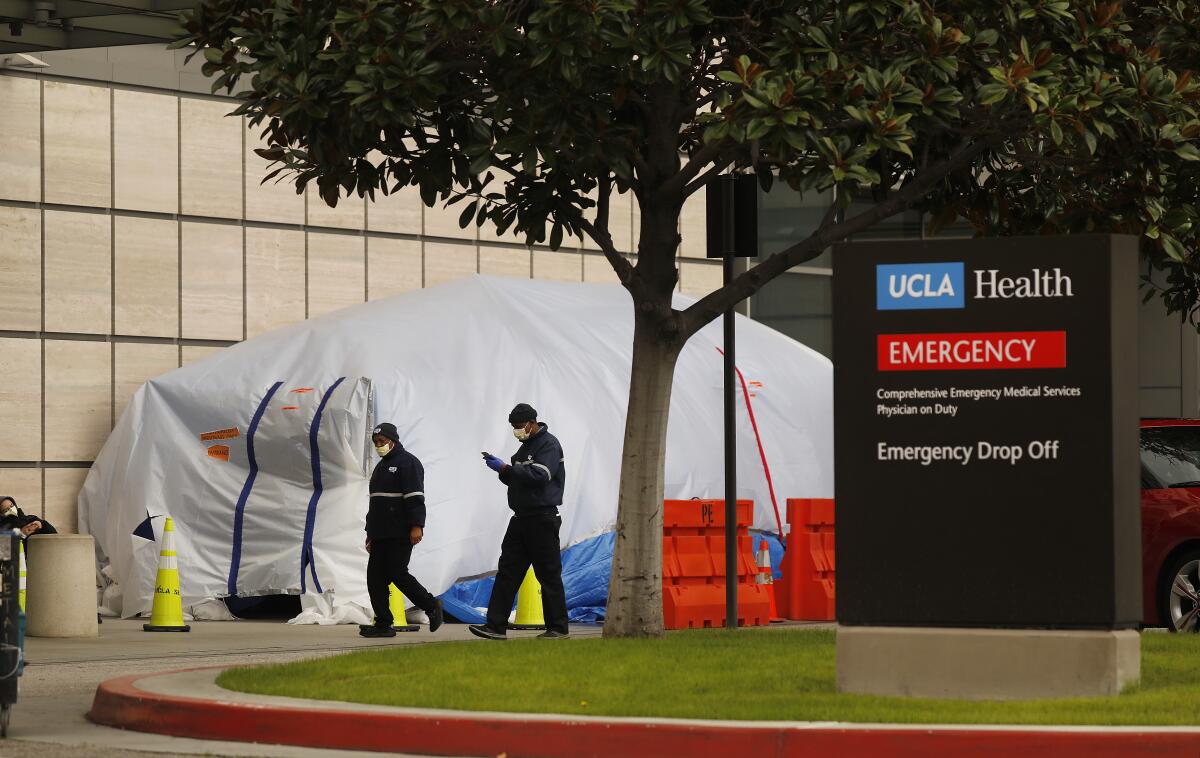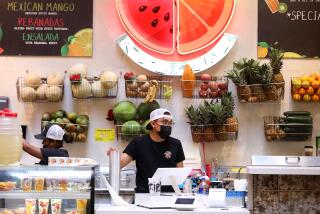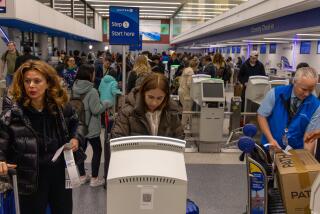These coronavirus patients aren’t being counted — or tested

- Share via
C.A. Lim woke Friday in her Venice apartment with a fever, dry cough, aching muscles, and a tightness in her chest like a corset she couldn’t take off.
At a Kaiser urgent care clinic, a physician and an infectious disease specialist told the 33-year-old nonprofit executive that she “clearly” had COVID-19, but that they couldn’t spare a test to confirm the diagnosis because she was not elderly or otherwise a high-risk patient.
“The doctor encouraged me to reach out to everyone I have been within six feet of within the past 10 days, and let them know I have COVID,” Lim recounted in an email. She and her husband immediately quarantined themselves and began calling, texting and emailing friends, colleagues and relatives, ultimately alerting some 60 to 70 people about the potential exposure.
Two co-workers she had crossed paths with at a training session in New York subsequently told her they also had come down with the coronavirus, she said.
Despite the illness of her associates and the strong opinion of her doctors, Lim is not included in the government tally of confirmed virus cases. Her experience is troublingly common, according to healthcare workers and patients. Due to a shortage of tests, many people identified by their doctors as probably or possibly stricken with COVID-19 are not being reported to authorities.
The Centers for Disease Control and Prevention reserved tests until recently for those who were severely ill and those with direct connections to afflicted regions or individuals, and the tests remain very difficult to obtain. For months, younger and healthier people who had symptoms of the virus have been told they don’t qualify for a screening and sent home by medical professionals with varying advice about what precautions to take.
The failure to test and quarantine this group is believed to be a major factor in the rapid growth of cases nationwide that has prompted the closures of schools and businesses.
While people on ventilators and in intensive care units were tested and their contacts traced, local health agencies were not informed about those with milder symptoms and they were not subject to government monitoring aimed at stopping the spread of the virus.
Widespread testing has allowed some countries like South Korea to contain the epidemic by identifying infected citizens, whether or not they had symptoms, and strictly quarantining them.
In L.A. County, which has a population of about 10 million, only about 1,100 people had been tested by Tuesday, though the number is expected to rise rapidly in the coming days as more labs come online, officials say. At least 8,200 people had been tested in California, according to state public health figures released Tuesday.
“This is good news for all of us, we desperately needed to be able to increase our lab capacity,” county health department director Barbara Ferrer said Tuesday.
Not every dry cough or fever is COVID-19. The symptoms of the virus are similar to those of the flu and the outbreak began as the US flu season was peaking, making testing even more critical for physicians to identify coronavirus.
Dr. Natalie Marino, a family medicine doctor at a Los Angeles County urgent care, said she had seen many patients with symptoms of coronavirus over the last two months, but her clinic did not have access to a single test until this week. The tests simply weren’t available.
“If we had tested more mild people in the community there would have at least been a chance for people to really take this seriously from the beginning,” Marino said. “I think that would’ve been better than what we know is happening right now.”
She said she told people she suspected of having the virus to keep themselves at home for at least 14 days, but acknowledged there was no way to enforce their behavior.
“You are trusting the patient to keep themselves at home ... and at least six feet from elderly family members,” she said.
Marcia Santini, an emergency room nurse at the Ronald Reagan UCLA Medical Center, echoed that assessment: “It’s blind trust, honey,”
People who showed up at the UCLA ER with a dry cough and a fever in recent weeks were not tested unless they were so ill they needed to be hospitalized. Patients could be screened for the flu, but if the results were negative, providers told them they might have the virus and sent them home with a four-page printout about proper hand-washing and how to manage household tasks while self-quarantining.
In Lim’s case, a Kaiser doctor recorded in her chart that while she did not meet the strict criteria for a test, “this patient is high suspicion for local transmission based on presentation and symptoms.”
Kaiser spokesman Terry Kanakri said that unfortunately the health provider was unable to say how many other untested patients were suspected of having the virus. In a statement, Kaiser said while it only reported positive tests to the local public health officials, untested patients with COVID-19 symptoms are “told to self-isolate at home, and they are monitored virtually.”
Health authorities seem to know little about these patients. Asked if they are tracking cases where a medical professional believes an untested person had coronavirus, a spokesperson for the California Department of Public Health said in a statement that “the department does not collect information on a provider’s clinical decision on whether or not to test a patient.”
Lim said she has not left her 500-square-foot studio apartment since receiving the diagnosis and stays on the other side of the room from her husband, who doctors said was probably positive but asymptomatic.
“We just have to do this weird little dance where we trade places if we need to be in the other’s ‘space,’” she explained.
Her husband emerges only briefly to walk their toy poodles, wearing a mask and staying within 40 feet of the apartment.
For others, that level of isolation hasn’t been possible. One L.A. mother, who spoke on the condition of anonymity, said her doctor told her March 3 that he suspected her high fever and pneumonia were coronavirus.
He told her to self-quarantine while waiting for the public health department to test her. But despite making “a million calls to a bunch of different people,” she was never tested. Last week, her doctor told her she didn’t qualify and there was nothing he could do.
As the days drew on, she struggled to avoid family members whom she lives with, including her school-age child, and ultimately feared she might have passed the virus to her child’s classmates.
“If there are more cases like mine, these are the reasons this is spreading so much,” she said.
Times staff writer Emily Baumgaertner contributed to this report.
More to Read
Sign up for Essential California
The most important California stories and recommendations in your inbox every morning.
You may occasionally receive promotional content from the Los Angeles Times.












